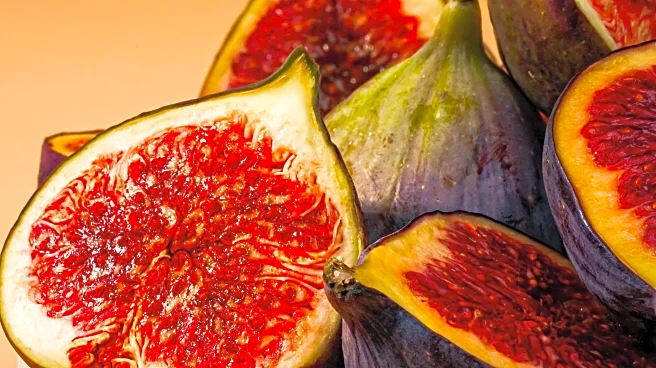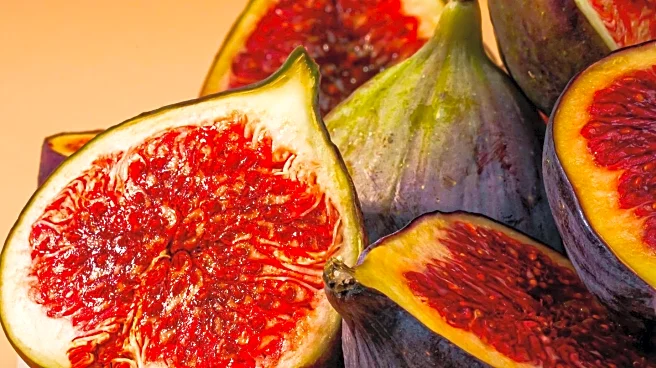What is the story about?
What's Happening?
The relationship between figs and fig wasps is a fascinating example of mutualism, where both species benefit from each other. Fig wasps are small insects that play a crucial role in the pollination of many fig species. However, most figs consumed in the U.S., such as Mission and Brown Turkey figs, do not require wasp pollination to ripen. These figs belong to the species Ficus carica, which includes cultivars that are parthenocarpic, meaning they can produce fruit without pollination. This results in figs that are typically free of wasps. While some fig varieties, like Smyrna and Calimyrna figs, do rely on wasps for pollination, the wasps often decompose or leave the fig before it is consumed.
Why It's Important?
Understanding the role of fig wasps in fig cultivation is significant for agricultural practices and consumer awareness. The mutualistic relationship between figs and wasps highlights the complexity of plant-pollinator interactions and their evolutionary importance. For consumers, the assurance that most figs in the U.S. are wasp-free addresses common misconceptions and concerns about fig consumption. This knowledge can influence purchasing decisions and dietary choices, promoting informed consumption of figs.
What's Next?
As research continues into the mutualistic relationship between figs and fig wasps, scientists may uncover more about the ecological significance of this interaction. This could lead to advancements in agricultural practices, particularly in regions where fig cultivation relies on wasp pollination. Additionally, increased consumer education about fig cultivation may enhance market demand for specific fig varieties, potentially impacting agricultural production and distribution strategies.
Beyond the Headlines
The fig-fig wasp mutualism is a keystone example of ecological interdependence, illustrating how species evolve together over millions of years. This relationship is not only crucial for fig reproduction but also supports broader ecosystem dynamics, as fig trees serve as a food source for various animals. The study of such mutualisms can provide insights into biodiversity conservation and the maintenance of ecological balance.
AI Generated Content
Do you find this article useful?













